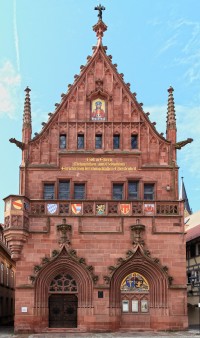Vorderseite: Büsten Luthers und Melanchthons einander gegenüber; darunter aufgeschlagene Bibel mit Aufschrift: JOH / 17,17
Umschrift: DR. MARTIN LUTHER * M. PH. MELANCHTHON; im Abschnitt: AM 25. JUN: 1530
Rückseite: Fünf Zeilen Schrift: LUTHERS WERK / THEILT SEINEN RUHM / MIT MELANCHTHONS / BEKEN[N]TNISSCHRIFT. / 1830
Martin Luther (1483 – 1546 ) und Philipp Melanchthon (1497 – 1560)
en

